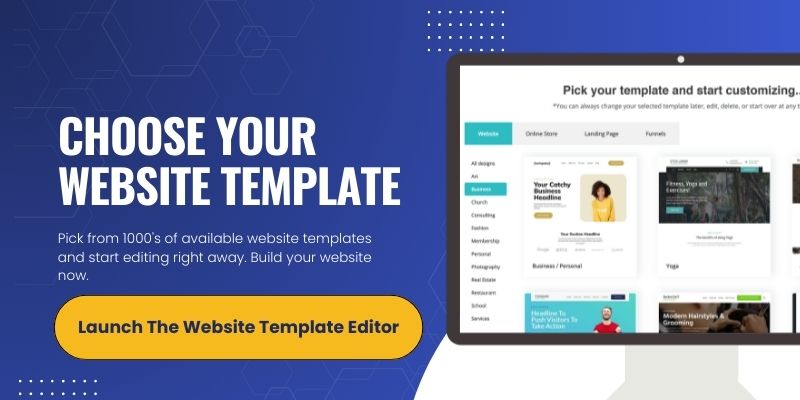Define Your Funnel Stages Clearly
Understanding Each Stage
When I first began my journey in marketing, I had a hazy understanding of what each stage of my funnel truly meant. It’s crucial to break this down. The awareness stage is where potential customers first learn about your brand. Then, they move to the consideration stage, where they evaluate your product. Finally, there’s the decision stage, where they commit to a purchase. Clearly defining these stages in your Google Sheet is the first step in analyzing how effectively you’re guiding your leads through your funnel.
Think of each stage as an opportunity to interact with your audience. What questions do they have? What information do they need? When I outlined these stages in my sheets, I could see more clearly where my leads were dropping off and where I needed to step in.
Once I got real with these definitions, my marketing strategies became much sharper. I was no longer throwing spaghetti at the wall to see what stuck; I had a map that showed me exactly where to focus my efforts.
Utilize Clear Metrics
Metrics are the heartbeat of your funnel analysis. Initially, I was overwhelmed by the number of metrics out there. But once I figured out which ones mattered for each stage, it clicked. For instance, measuring conversion rates from the awareness stage to the consideration stage helped me see where I was losing potential customers.
With Google Sheets, I set up formulas to calculate these metrics automatically. It’s like having a personal assistant who tracks everything for you! It made identifying problem areas so much easier and less stressful. I started focusing on high-impact metrics and saw my understanding improve exponentially.
Beyond just tracking, look for patterns. If you notice a consistent drop-off at a specific stage, dig into why. Are your messaging and offers resonating with your audience? These insights can be eye-opening, and trust me, you’ll want to dive deep into your data.
Identify Conversion Bottlenecks
Identifying bottlenecks can feel like looking for a needle in a haystack, but it’s vital. After mapping out my stages and metrics, I started running analyses to pinpoint where leads stalled. These bottlenecks are often tied to unclear CTAs or subpar landing pages.
I remember when I was analyzing my funnel, I found that my landing page wasn’t loading properly on certain devices, which was causing headaches! By updating that page based on insights from my Google Sheet, I improved conversions significantly.
Be vigilant about tracking user behavior. Heat maps and user testing can be powerful tools that supplement the data you’re gathering in your sheets. Don’t be shy about making adjustments based on what you find!
Segment Your Audience Effectively
Understanding Different Personas
Honestly, one of the biggest shifts in my marketing approach was segmenting my audience. Not every lead is your ideal customer, and applying a one-size-fits-all approach should be a big no-no. As I dug into my audience segments using Google Sheets, I quickly realized I could tailor my messaging based on specifics such as demographics and purchasing behavior.
When you understand different personas, you can customize your content to speak directly to their pain points, and trust me, this is a game-changer. My engagement rates skyrocketed when I tailored my funnel stages to speak to different segments. You’d be amazed at how willing prospects are to convert when they feel seen and understood.
Build out a section in your Google Sheet for detailed personas and update it regularly. As I learned more about my audience, I revisited and adjusted these personas to adapt to changing market conditions and preferences.
Experiment with Targeted Campaigns
Once your segments are identified, it’s time to experiment! I started running targeted campaigns focused on specific personas, and it was exhilarating to see how differently my audiences responded. Using my Google Sheet, I tracked the success of various campaigns across these segments.
If one campaign wasn’t performing as expected, I could quickly pivot and try something else. I began implementing A/B testing strategies, and the insights I gained helped me refine not just my messaging, but the channels through which I was reaching my audience. It’s all about finding that sweet spot!
Don’t shy away from failure; it’s often where you’ll find your best insights. Every experiment you run is another opportunity to learn about your customers and what they want from you, which is ultimately the goal.
Analyze Content Engagement
Content is king, or at least, it should be at the heart of your funnel. Using my Google Sheet, I started tracking content engagement like clicks, shares, and comments. This analysis revealed what content resonated most with my audience at each stage of the funnel.
With this data, I could pivot quickly, doubling down on formats or topics that were performing well, while letting go of what wasn’t sticking. It was like having a crystal ball that helped guide my content strategy.
Also, consider how your audience interacts with your content across different touchpoints. Social media might hold more engagement than email for one segment, while another might prefer newsletters. Understanding this helps cater your content strategy effectively!
Set Up Clear Goals and KPIs
Defining Success Criteria
When I initially set goals for my funnel, I went broad and vague. Once I narrowed down my focus and established SMART (Specific, Measurable, Achievable, Relevant, Time-bound) goals, everything changed! I started logging my KPIs in my Google Sheet, and it felt so empowering to have a clear sense of direction.
Every campaign I ran began with these goals guiding my strategies. If I wanted a particular conversion rate, I could backtrack to fine-tune my tactics and keep my efforts focused. It sparked a drive in my team, too; everyone knew what we were aiming for!
With the right goals, analyzing your performance becomes much more straightforward. Your Google Sheet will turn from a simple data dump into a dynamic tool that informs decisions and strategies.
Regular Review of Performance
Setting and forgetting goals doesn’t cut it. It’s imperative to regularly review your performance against your KPIs. Initially, I was nervous about doing this, but I learned the earlier you catch issues, the easier they are to fix. I recommend scheduling monthly reviews to dive deep into your data.
During these reviews, pull up your Google Sheet and take a good hard look. What worked? What didn’t? Understanding these patterns helps you stay agile and responsive to your audience’s behavior. I often found that minor adjustments made at the right time could lead to significant payoffs.
Don’t hesitate to recalibrating your goals as needed. Your business will change; make sure your goals evolve with it.
Cultivating a Feedback Loop
One of the most enlightening aspects of this entire process has been integrating feedback loops. Regular input from your team and even from your audience can provide insight that raw data won’t show you. I always keep a section in my Google Sheet for notes on feedback received, whether it’s insights from a team call or customer comments.
This feedback loop allows you to adapt your approach continually. For instance, if numerous leads said they found your value proposition confusing, that’s valuable insight! You can loop that back into your content and messaging strategy.
Building that constant connection between analyzing your pipeline and the feedback you receive will create a responsive marketing strategy that keeps your audience engaged and your funnel flowing smoothly.
Review and Optimize Your Processes
Streamlining Your Workflow
As I delved into my marketing funnel analysis, one thing became clear: optimization was everything. My Google Sheets not only helped me analyze but also offered opportunities for process improvements. I began documenting my workflow steps for each project: What was working? What was a total mess?
Creating visual representations of my processes helped me spot redundancies where we could save time and resources. This kind of structure promotes efficiency and ultimately leads to better results. Remember, time saved is money saved!
Plus, optimizing processes creates a culture of continuous improvement. Everyone in your team gets on board with working smarter, not harder. It’s a win-win!
Consistent Auditing Practices
Don’t underestimate the power of regular audits. Regularly reviewing both your marketing funnel and processes gives you a clear picture of how things are running. I set up a quarterly audit to examine what was working well and what was falling through the cracks.
This is where the real learning happens! During my audits, I was often surprised by trends and data shifts that hadn’t previously caught my eye. For me, even small insights gained from a routine check gave rise to big changes in strategy.
Having a structured audit process set a rhythm for me and my team. It also creates accountability, ensuring everyone is on their toes anticipating the next review, which in itself might drive performance upward!
Setting the Bar Higher
As you analyze and optimize, always push yourself to set the bar higher. Celebrate achievements, but don’t rest on your laurels. If you hit that goal of a 5% conversion rate, aim for 7% next time! Continuous improvement is key to keeping your marketing funnel vibrant and effective.
I established a section in my Google Sheet dedicated to brainstorming new stretch goals. This creates a space for creative thinking and coming up with fresh and exciting ideas that can push your funnel further.
By fostering a culture of growth and experimentation, you not only improve your marketing efforts but also inspire those around you to join in. Trust me; as you begin to see varied successes, the entire energy in your business shifts towards progress!
FAQs
1. What is a marketing funnel?
A marketing funnel represents the customer journey, illustrating how potential customers move from awareness to making a purchase. Breaking down the stages helps marketers optimize strategies and improve conversion rates.
2. Why should I use a Google Sheet for funnel analysis?
Google Sheets allows easy data organization, tracking, and analysis. Plus, its collaborative features mean your team can work together seamlessly, making it a great tool for funnel analysis!
3. What metrics should I track in my marketing funnel?
Focus on metrics like conversion rates, bounce rates, and engagement stats at each stage of your funnel. These metrics will give you insights into where potential customers drop off and where to improve.
4. How often should I review my marketing funnel performance?
Regular reviews—typically monthly or quarterly—are recommended. These check-ups help you stay on top of your performance and ensure your strategies are effectively guiding customers through the funnel.
5. Can optimizing my funnel impact my sales?
Absolutely! By analyzing and applying insights from your funnel, you can make informed decisions to improve customer engagement, which can lead to higher conversion rates and ultimately increased sales.

